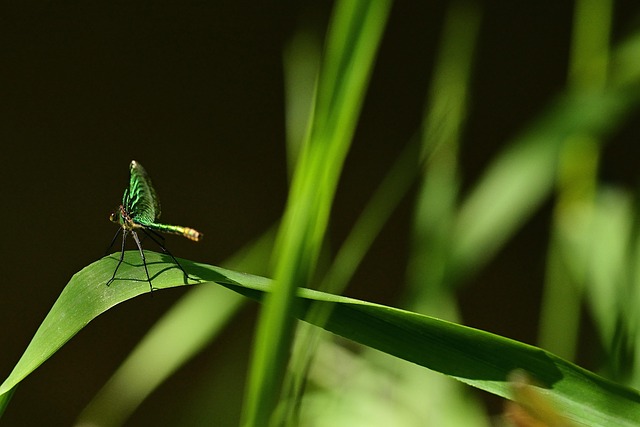Psocids, or book lice, are tiny but destructive insects that thrive in organic-rich environments, feeding on paper and textiles. Their rapid reproduction and hiding abilities make them challenging to eliminate without professional help. Infestations can cause significant property damage, health issues, and structural problems. Certified pest control experts offer specialized treatments, identifying hiding places, developing personalized plans, and preventing future recurrences. After successful removal, post-treatment care includes monitoring, cleaning guidelines, and strategic adjustments to maintain a psocid-free environment through ongoing communication with professionals.
Psocids, tiny yet relentless pests, can infiltrate homes and businesses, causing damage and discomfort. Understanding their behavior is key to effective management. This article delves into the world of psocid control, highlighting the crucial role professional services play in achieving guaranteed results. From identifying entry points to implementing tailored strategies, expert pest controllers offer solutions that go beyond surface-level treatments, ensuring a psocid-free environment. Discover the steps towards a successful and lasting psocid removal strategy.
Understanding Psocids: Their Behavior and Impact
Psocids, also known as book lice, are tiny insects that can cause significant problems in homes and commercial spaces. These pests are highly adaptable and often go unnoticed until their populations grow. Understanding their behavior is crucial when it comes to effective pest control for psocids. They feed on starchy materials like paper products, textiles, and even mold, making them common in environments with high organic content. Psocids reproduce quickly, and their ability to move through narrow cracks and crevices makes them hard to eradicate without professional help.
The impact of psocid infestation can be severe. They leave behind a trail of damage, including discolored and damaged fabrics, paper, and building materials. In extreme cases, they can even cause structural issues by weakening wooden structures. Their presence can also lead to health concerns as some individuals may experience allergic reactions or sensitivities to their shed skins and secretions. Timely intervention is key to preventing extensive damage and ensuring a healthy environment. That’s where expert psocid control services come into play, offering guaranteed results through specialized treatments tailored to the specific needs of each case.
The Importance of Professional Pest Control for Psocid Removal
When dealing with psocids, or book lice, as they’re also known, professional pest control services are indispensable. These microscopic insects can quickly infest homes and businesses, causing significant damage to books, fabrics, and other items. Attempting DIY methods may seem like a quick fix but often falls short of completely eradicating the problem. Psocids reproduce rapidly, making them challenging to manage without expert intervention.
Hiring certified pest control professionals equipped with specialized knowledge and tools is key to guaranteed results. They understand the unique behaviors and habits of psocids, enabling them to identify hiding places and develop tailored treatment plans. With their advanced techniques, these experts can effectively eliminate existing infestations while also preventing future recurrences, providing peace of mind for property owners.
Expert Strategies for Effective Psocid Control and Prevention
When it comes to dealing with psocids, professional pest control services offer expert strategies that go beyond simple removal. These specialists employ advanced techniques and industry-leading products to ensure comprehensive psocid control. They begin by meticulously identifying the extent of the infestation, understanding the species involved, and pinpointing all potential entry points or hiding places within structures.
Next, they implement tailored treatments that may include targeted applications of pesticides, mechanical methods like vacuuming and physical removal, as well as strategic sealing or repairing of cracks and crevices to prevent future invasions. Regular inspections are conducted to monitor the situation, detect early signs of recurrence, and provide prompt, effective interventions. This holistic approach guarantees not just psocid removal but also robust prevention measures for long-term protection against these pests.
Achieving Guaranteed Results: Post-Treatment Care and Monitoring
After receiving expert psocid control and removal services, achieving guaranteed results requires a comprehensive post-treatment care strategy. This includes meticulous monitoring to ensure the pest problem has been effectively eliminated and to prevent future infestations. Professional exterminators often provide detailed instructions on how to maintain a psocid-free environment, encompassing both indoor and outdoor areas. This might involve regular cleaning routines, specific storage practices, and even adjustments to lighting conditions, all designed to disrupt psocid breeding cycles.
Effective monitoring involves periodic inspections to verify the absence of any surviving psocids or eggs. Exterminators may employ advanced techniques such as black light checks and specialized monitoring traps to identify any lingering signs of the pest. Regular communication between homeowners and professionals is vital during this phase, allowing for prompt action if any issues arise and ensuring a sustained environment free from these persistent pests.
When it comes to dealing with psocids, professional pest control services offer the best guarantee of successful removal. By employing expert strategies that target these tiny invaders and their unique behaviors, you can achieve a pest-free environment. Post-treatment care and monitoring are key to ensuring the problem is completely resolved, preventing reinfestation, and providing peace of mind. For effective and assured psocid control, trust the experts in pest control for psocids to deliver exceptional results.
